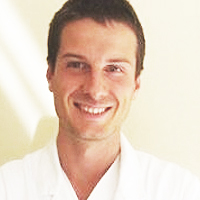Application of Multi-criteria Decision-making Methods for Forensic Analysis of Mechanical Parts in Vehicle Accidents using q-Rung Orthopair Fuzzy Numbers
Published on: 31st October, 2024
This study explores the application of a Multi-Criteria Decision-Making (MCDM) approach based on q-rung orthopair fuzzy numbers to identify the origin of mechanical parts found at vehicle accident scenes. The primary objective is to determine the most likely vehicle to which these parts belong by evaluating key criteria such as compatibility, damage level, serial number matching, and color compatibility. Q-rung orthopair fuzzy numbers offer an advanced method to handle the inherent uncertainty and vagueness associated with forensic evaluations, particularly in scenarios where data is incomplete or imprecise. The proposed methodology involves defining the criteria, assigning membership and non-membership degrees using q-rung orthopair fuzzy sets, and applying an aggregation process to effectively rank alternatives. This approach facilitates flexible decision-making by accommodating different levels of confidence and uncertainty, making it particularly suitable for forensic applications where evidence is often ambiguous. The findings demonstrate that integrating q-rung orthopair fuzzy numbers into the MCDM framework significantly enhances the accuracy and reliability of identifying vehicle components involved in accidents. The proposed methodology provides a systematic tool to support forensic investigations, aiding in the determination of liability and contributing to more robust outcomes in mechanical evidence analysis.
Understanding and Managing Caesarean Scar Ectopic Pregnancy: A Retrospective Analysis of Risk Factors, Strategies, and Outcomes
Published on: 31st October, 2024
Objective: Caesarean Scar Ectopic Pregnancies (CSEP) pose distinct diagnostic and management challenges. This study investigates the risk factors, treatment options, and outcomes for CSEP cases treated at Prince Sultan Medical Military City, Riyadh.Methods: Over a two-year period, medical records of 28 patients with CSEP were reviewed, collecting data on patient demographics, obstetric history, and treatment outcomes. This analysis aimed to identify influential risk factors and assess the effectiveness of various management strategies.Results: Treatment success was achieved in 85.7% of cases, with Methotrexate (MTX) proving effective in over half of the cases. The findings suggest significant risk factors and best practices for managing this rare condition.Conclusion: Early detection, risk factor awareness, and tailored treatment strategies are key to optimizing outcomes in patients with CSEP.
Forest History Association of Wisconsin
Published on: 30th October, 2024
The Enterprise Radiation Forest (ERF) study was initially introduced as a topic of discussion at the Institute of Forest Genetics, USDA, USFS, in the late 1960s. During that period, a program was endorsed for investigating the impacts of radiation on the forest ecosystem. The rationale for this was to facilitate the prediction of potential outcomes in the occurrence of a nuclear disaster. The research location was situated within the forested lands in Enterprise of Oneida County, Wisconsin, United States. The radiation source in question was a 10,000 curie source of Cesium-137, characterized by a halflife of 33 years. Furthermore, a study concerning lichens was also carried out, the data, photographs, and micrographs were meticulously gathered to illustrate the pre-irradiation activity of the species. This subject holds significant value for dissemination among peers in the scientific community, particularly considering the resilience exhibited by natural ecosystems in response to varying levels of radiation. The information is reviewed with the objective of the entire program to ascertain the potential consequences for a northern forest ecosystem in the event of a nuclear disaster, in addition to the two publications from the Atomic Energy Commission.
Causes of Coronary Angioplasty Denial in Patients Diagnosed with Significant Coronary Artery Disease in East Afghanistan
Published on: 30th October, 2024
Coronary Artery Disease (CAD) is a leading cause of mortality worldwide, with coronary angioplasty being a crucial intervention for patients with significant disease. This study aimed to identify and analyze the causes of coronary angioplasty denial in patients with significant coronary artery disease in Afghanistan, focusing on demographic, socioeconomic, and clinical factors.A case-control study was conducted with a sample size of 213 patients diagnosed with significant CAD at tertiary care center in Afghanistan. The case group consisted of 106 patients who were denied angioplasty, and the control group included 107 patients who underwent the procedure. Data were collected on demographic characteristics, comorbidities, education, residence, functional status, income, and the reasons for angioplasty denial. Descriptive statistics and comparative analyses were performed to assess the factors associated with denial.The primary reasons for angioplasty denial were financial constraints (45.3%, p < 0.001), limited hospital facilities (15.1%, p = 0.045), patient refusal (23.6%, p < 0.001), and physician preference for conservative management (12.3%, p = 0.091). Denial rates were higher among patients who were older, had multiple comorbidities, were from rural areas, and had lower education and income levels. Illiteracy and cultural beliefs contributed significantly to patient refusal, while inadequate healthcare infrastructure disproportionately affected rural populations.Financial and infrastructural barriers are the leading causes of coronary angioplasty denial in Afghanistan, exacerbating disparities in healthcare access, particularly among low-income and rural patients. Addressing these issues through policy reforms, improved healthcare infrastructure, and targeted public health education is essential to reducing CAD-related morbidity and mortality in the country.
Pharmacological Manipulation of the Aging Pathways to Effect Health Span and Lifespan with Special Reference to SGLT2 Inhibitors as Powerful Anti-aging Agents in Humans
Published on: 30th October, 2024
Calorie restriction has been shown to slow the aging process in numerous organisms including primates. Caloric excess states, such as type 2 diabetes, are associated with accelerated aging and the incidence and severity of chronic diseases. The nutrient-sensing pathways and intestinal microbiome are important systems that affect aging and chronic disease development. This manuscript reviews the various pathways involved with aging and chronic disease development and examines the pharmacological manipulation of these systems which appear to slow aging and the chronic diseases of aging in experimental model organisms and collaborating human data when available. Finally, the abundance of experimental and human data suggesting the newer diabetic medications, the sodium-glucose transport inhibitors, are potent anti-aging agents is provided.
About Efficiency of High-order Harmonic Generation in Attosecond Physics
Published on: 29th October, 2024
For the first time, the interaction between Hydrogen atom and Free-Electron Lasers (FEL) is simulated. The conversion efficiency of High-order Harmonic Generation (HHG) can be enhanced by utilizing a two-color free electron laser with frequency multiplication. It is found that the conversion efficiency of HHG is improved to the largest extent when fourth-fold frequency multiplication is introduced into two-color FEL. The microscopic mechanism of improving the efficiency of HHG is analyzed and discussed.
Precessional Motion Emerging from Relativistic Component of External Force
Published on: 25th October, 2024
The external force in the relativistic equation of motion can be separated into two components: Fr and Fp. The first is expressed by the physical force divided by the square of the relativistic Lorentz factor, i.e γ2. This force dominates for non-relativistic velocities and vanishes for velocities approaching the speed of light c. On the other hand, the second term increases from zero with increasing velocity and dominates for velocities close to c. It is then a purely relativistic component. The characteristic feature of this component is its zero power, Fp ⋅ v = 0, but it is responsible for the relativistic precession. The effect was confirmed by numerical solutions of the equation of motion. Relativistic formulas for the precession frequency for point objects moving in selected fields of central forces were also derived analytically. It has been shown that for weak gravitational interactions, the correction for relativistic precession is small, negligibly small for Earth, and relatively small, though measurable, for Mercury. In turn, for the microworld and electrostatic forces (e.g., for the hydrogen atom), relativistic precession can fundamentally affect the movement of the electron.
Pseudocalcinosis Tumorale (Teutschlander Disease) in Chronic Hemodialysis Patients
Published on: 24th October, 2024
Pseudotumoral calcinosis (CPT) is a condition characterized by the deposition of calcium phosphate crystals in the periarticular tissues, forming large calcified masses. Although the pathophysiology of CPT is not fully understood, an increase in the calcium-phosphate product beyond the precipitation threshold and severe hyperparathyroidism appear to play a significant role. Treatment remains controversial, with surgical excision often recommended. We report a case of CPT in a 74-year-old diabetic patient undergoing chronic hemodialysis who experienced progressively worsening pain in the left hip for six months, along with mobility difficulties. A CT scan revealed a calcified mass on the posterior thigh, likely explaining the electric shock-like pain, as well as compression of the superficial femoral artery causing decubitus pain resembling critical limb ischemia. The biological assessment showed elevated calcium-phosphate levels and hyperparathyroidism. Surgical excision is not indicated due to the mass’s proximity to vascular and nerve structures. This case highlights the diagnostic and therapeutic challenges of CPT, emphasizing the need for iterative angioplasties, considering that this condition is rare in chronic hemodialysis patients with calcified periarticular masses.
Agriculture High-Quality Development and Nutrition
Published on: 24th October, 2024
Modern Agricultural production wants to efficiently produce plant products and benefits to meet people's needs. However, because of better plant species and varieties, overuse of fertilizer and overdose of pesticide alters the plant resources relationship, resulting in soil degradation, vegetation decline, and crop failure or waste of resources, which influence the quality of fruit and benefit and are unfavorable for the sustainable utilization of nature resources and crops high-quality development. After a couple of years of study, the results showed that Agricultural development went into agricultural high-quality development in 2017, which is to use effective measures or methods to maximize yield and benefits and meet the need of people's need for better Agricultural produce and a better life. The theory foundation of the sustainable utilization of natural resources and Agriculture high-quality production is the resources use limit by plants, vegetation carrying capacity, and critical period of plant resources relationship regulation. The methods of Agriculture high-quality development are to select excellent plant species or varieties based on site conditions and market needs before planting crop young plants and sowing seeds, adopt appropriate initial planting density when planting crop young plants and sowing seeds, and regulate the relationship between plant growth and resources need in the process of crop production in a timely and appropriate amount, especially the chemical fertilizer and pesticide to obtain the maximum yield and benefits and realize the sustainable utilization of natural resources and achieve agricultural high-quality development.
Advances in Physiological Research: Consideration on Arterial Hypercapnia in Acute Cardiogenic Pulmonary Edema (ACPE)
Published on: 24th October, 2024
The causes of hypercapnia in Acute Cardiogenic Pulmonary Edema are still unknown. Our hypothesis recognizes an alteration of the ventilation-perfusion ratio in the apical areas of the lung as the major cause. The redistribution of blood to the apical lung zone in hypertensive pulmonary circulation determines an excess of perfusion compared to ventilation and consequently hypercapnia. Our suggestion might be in favor of Bilevel-PAP over Continuous Positive Airway Pressure (CPAP) as the first line of therapy.




